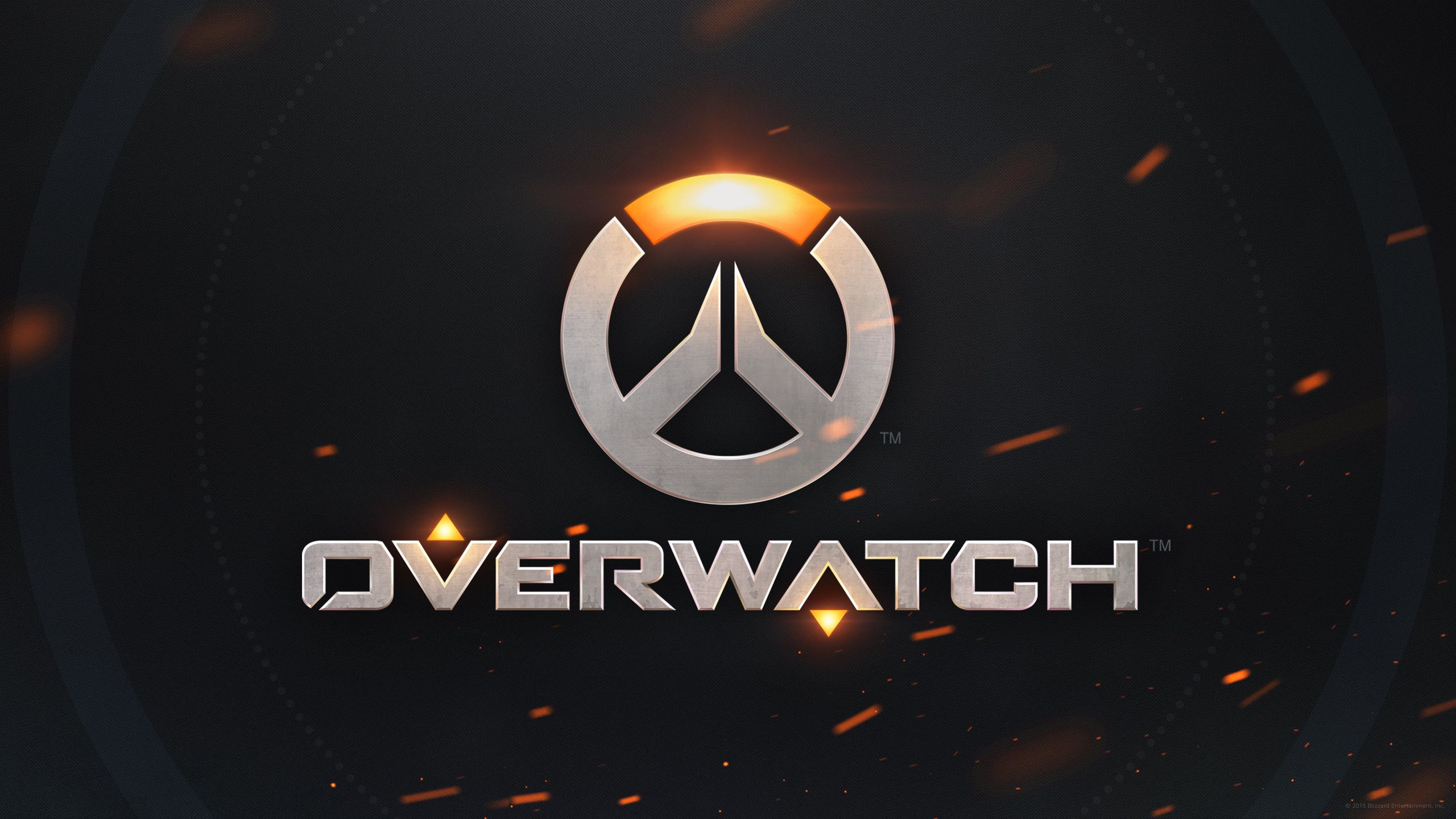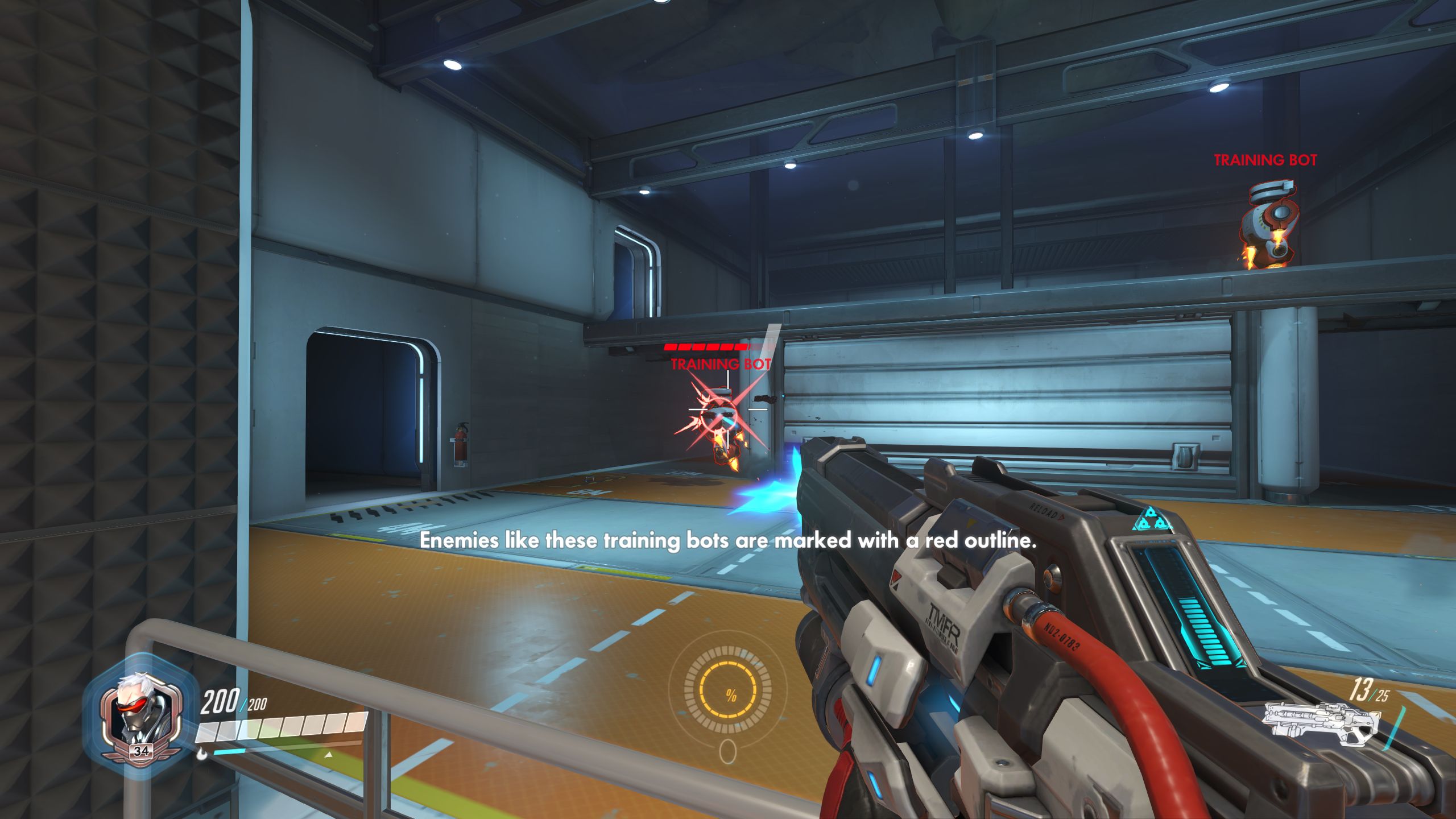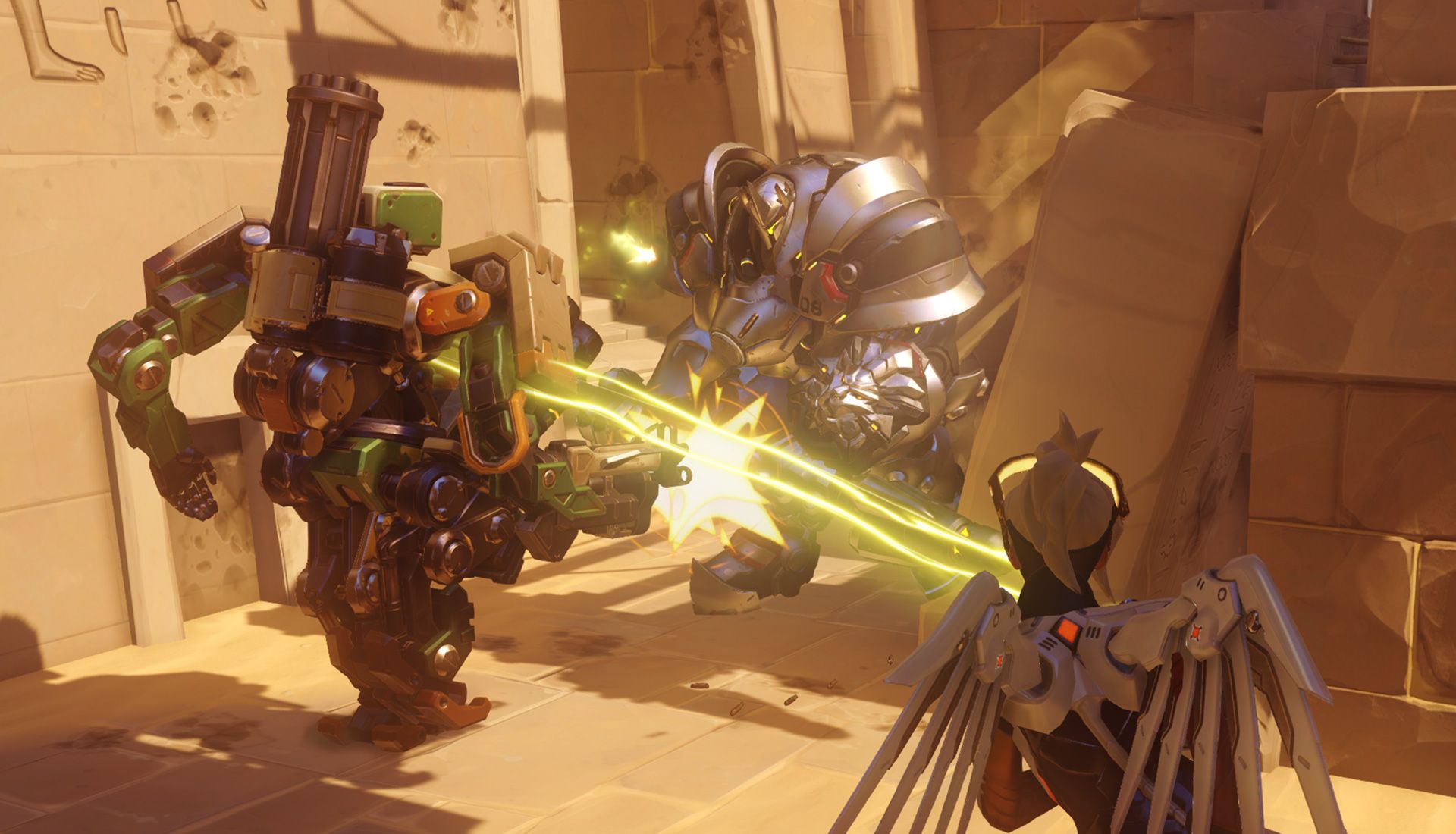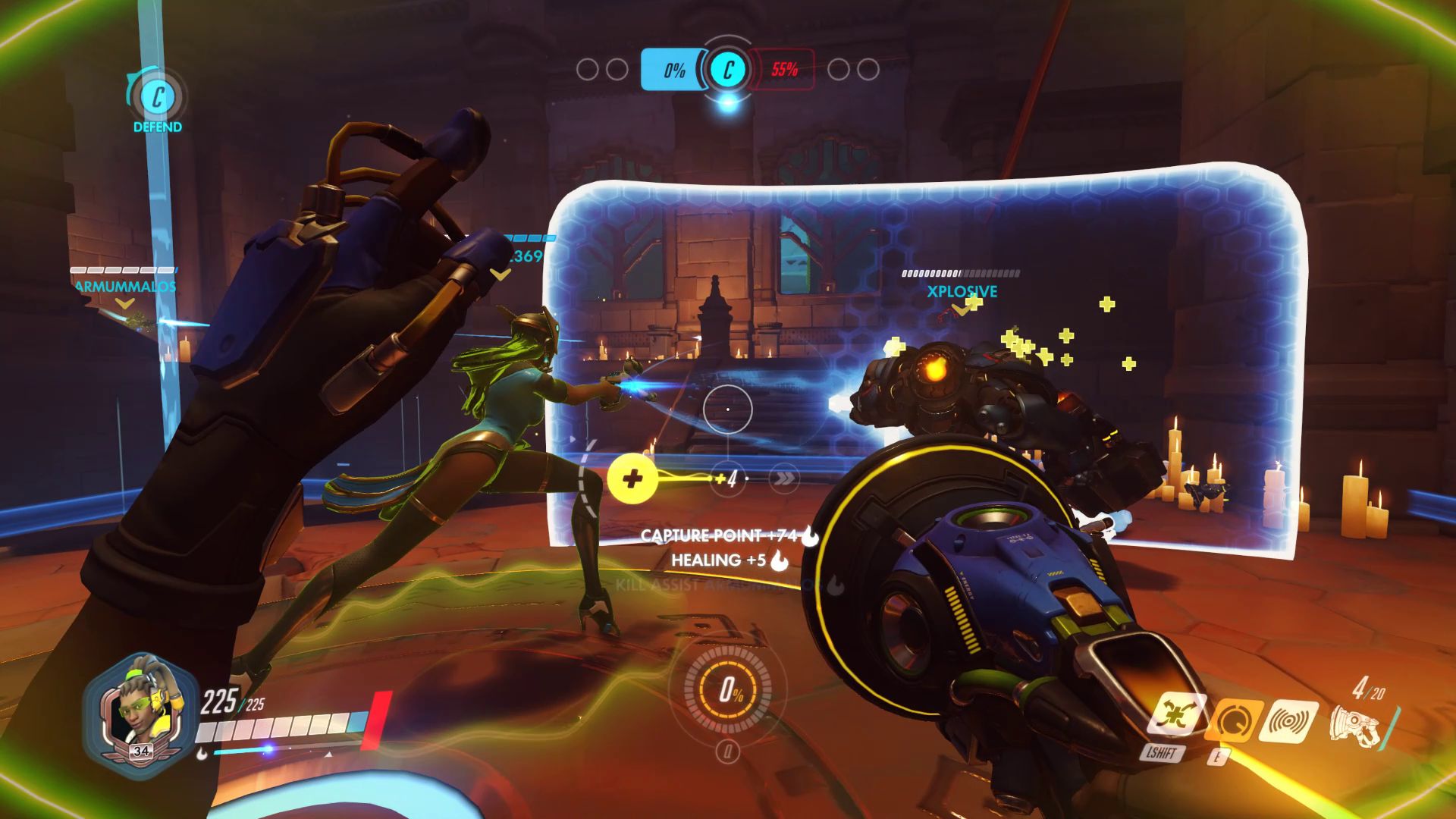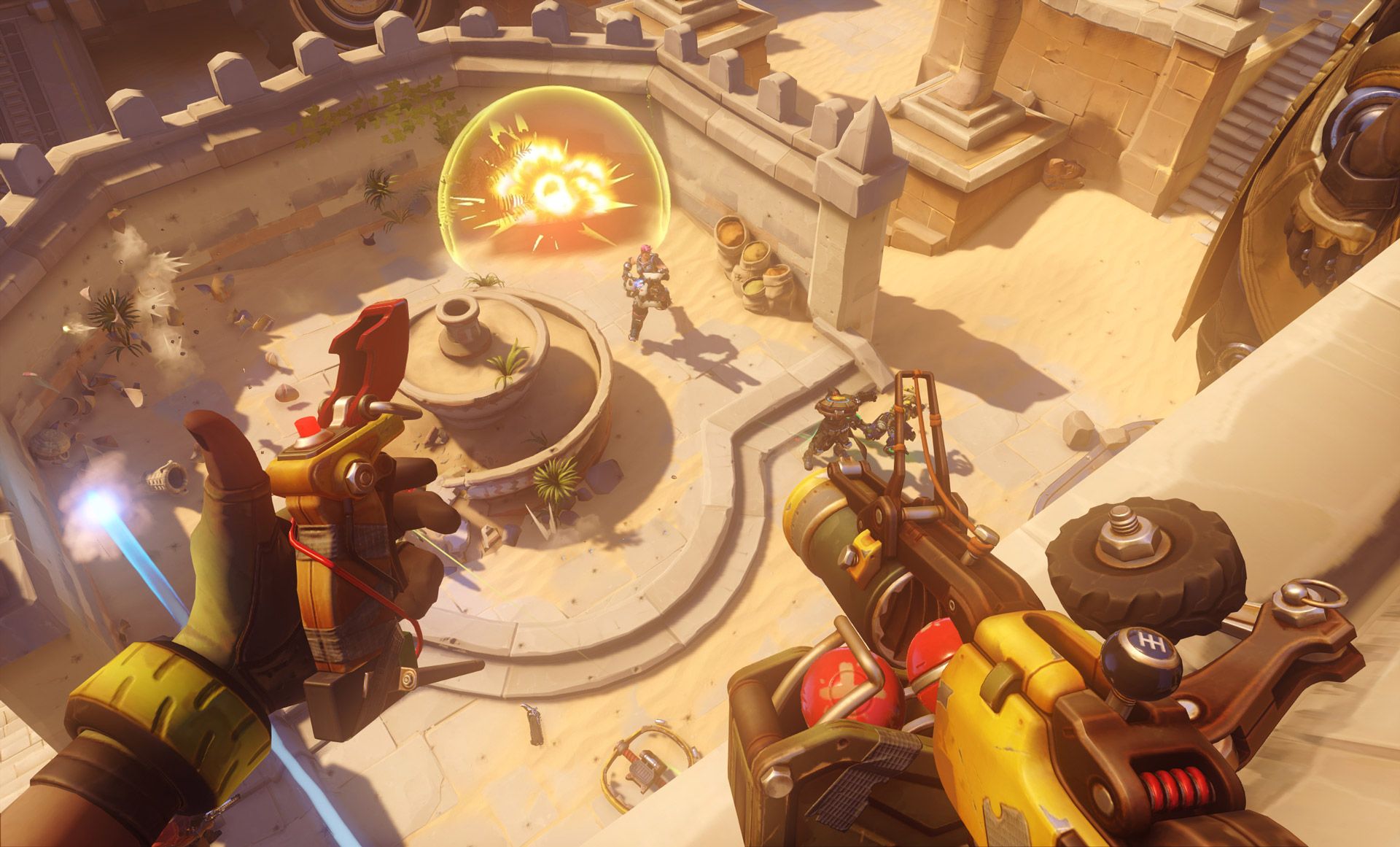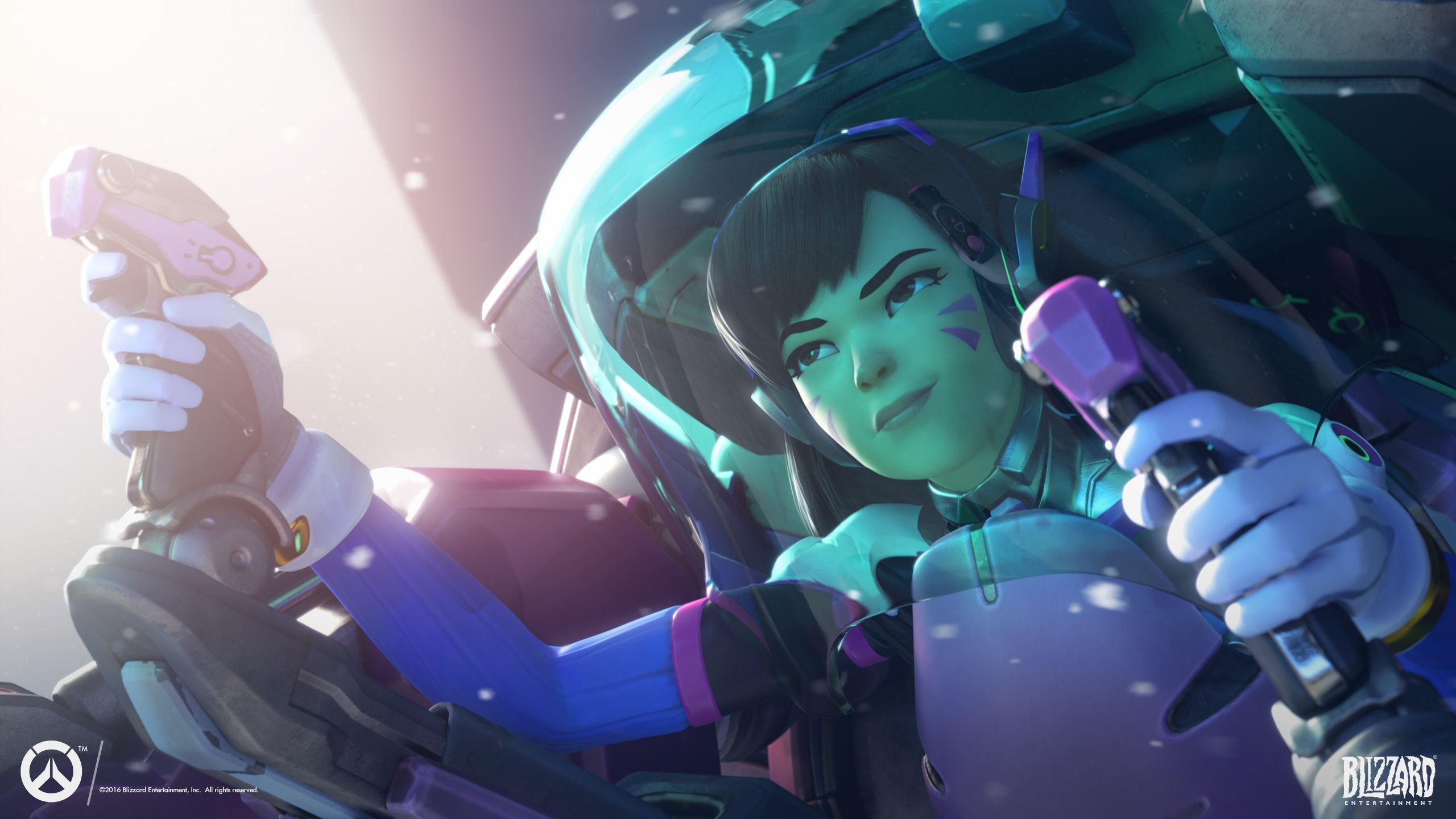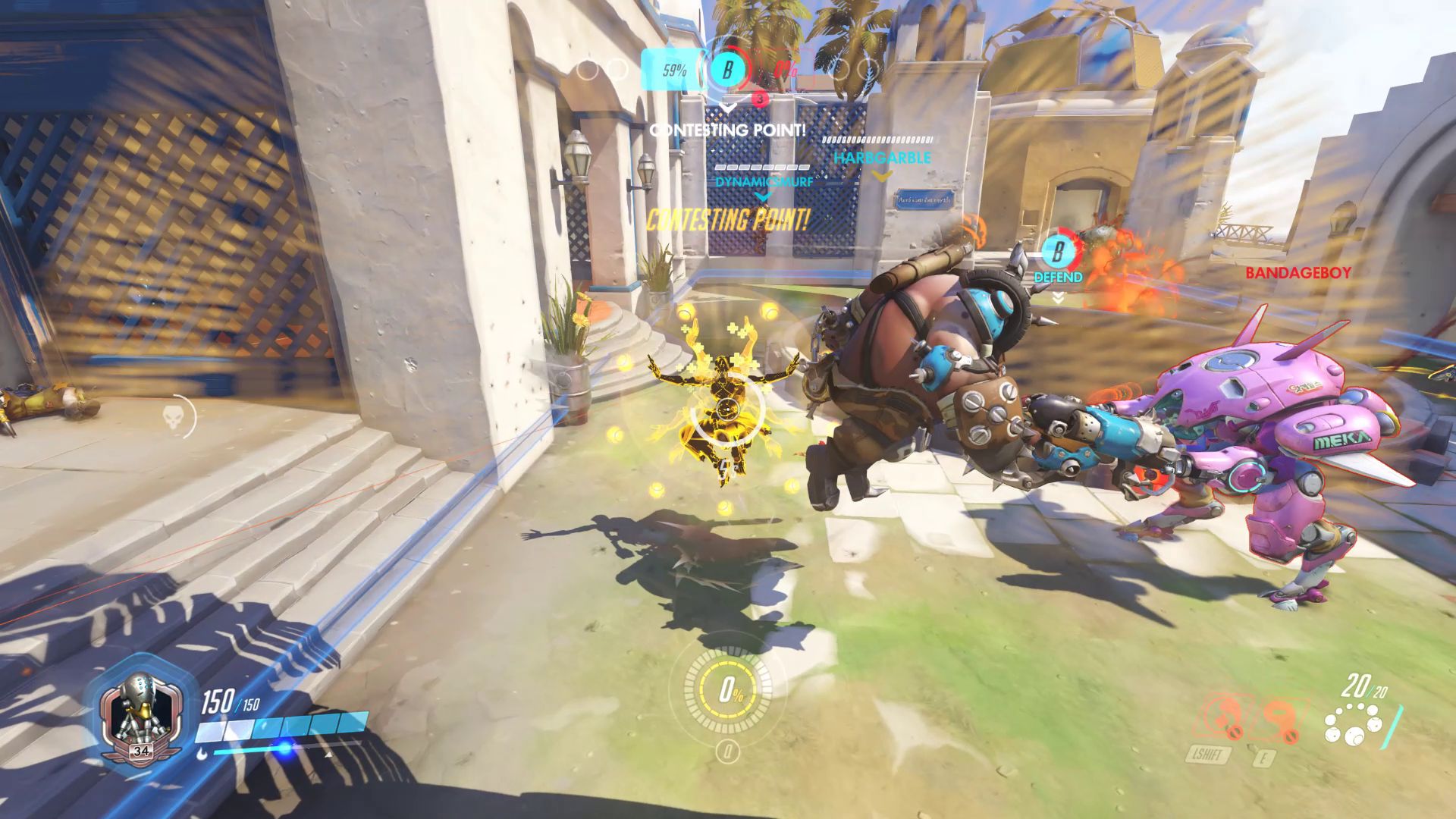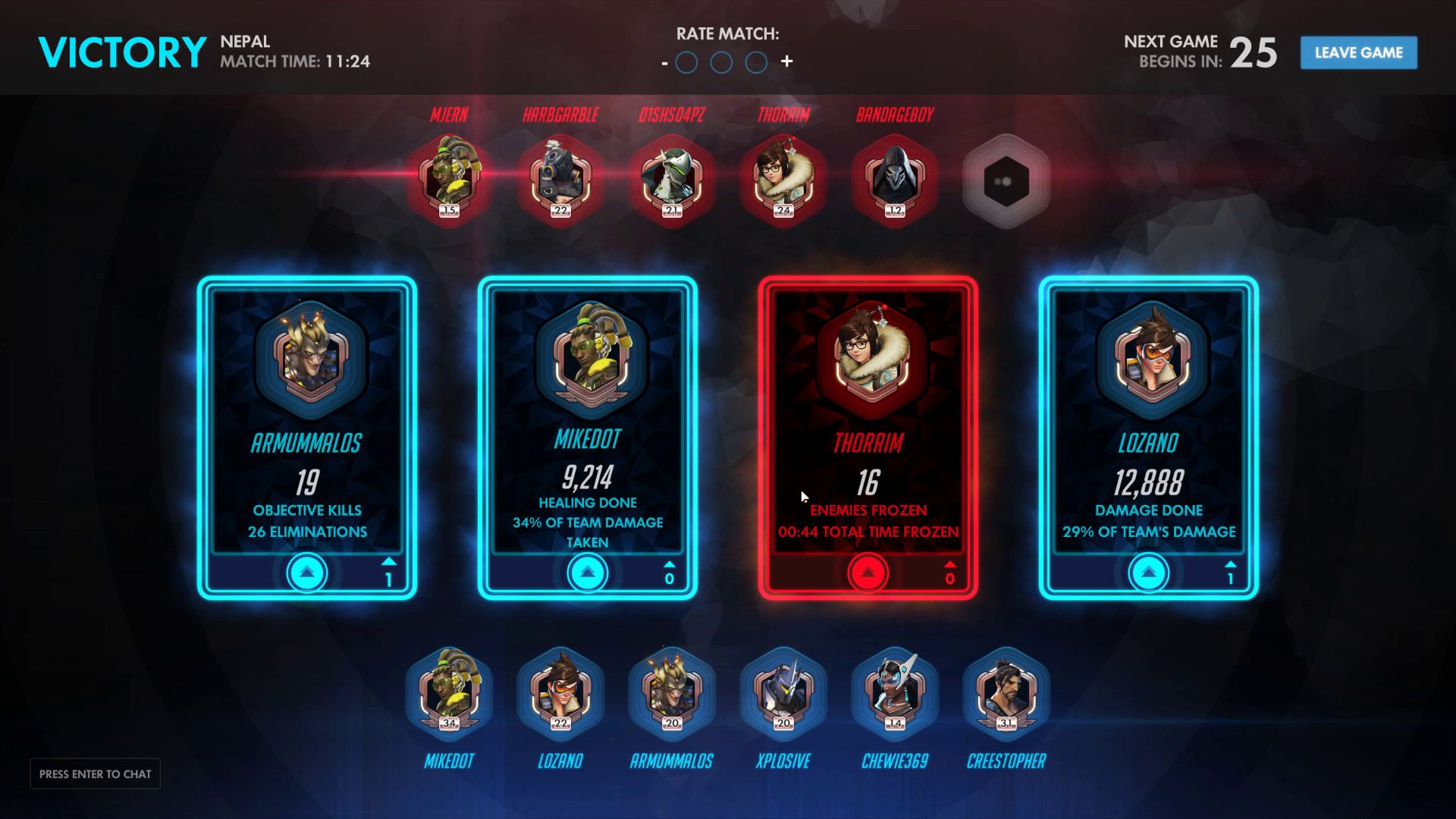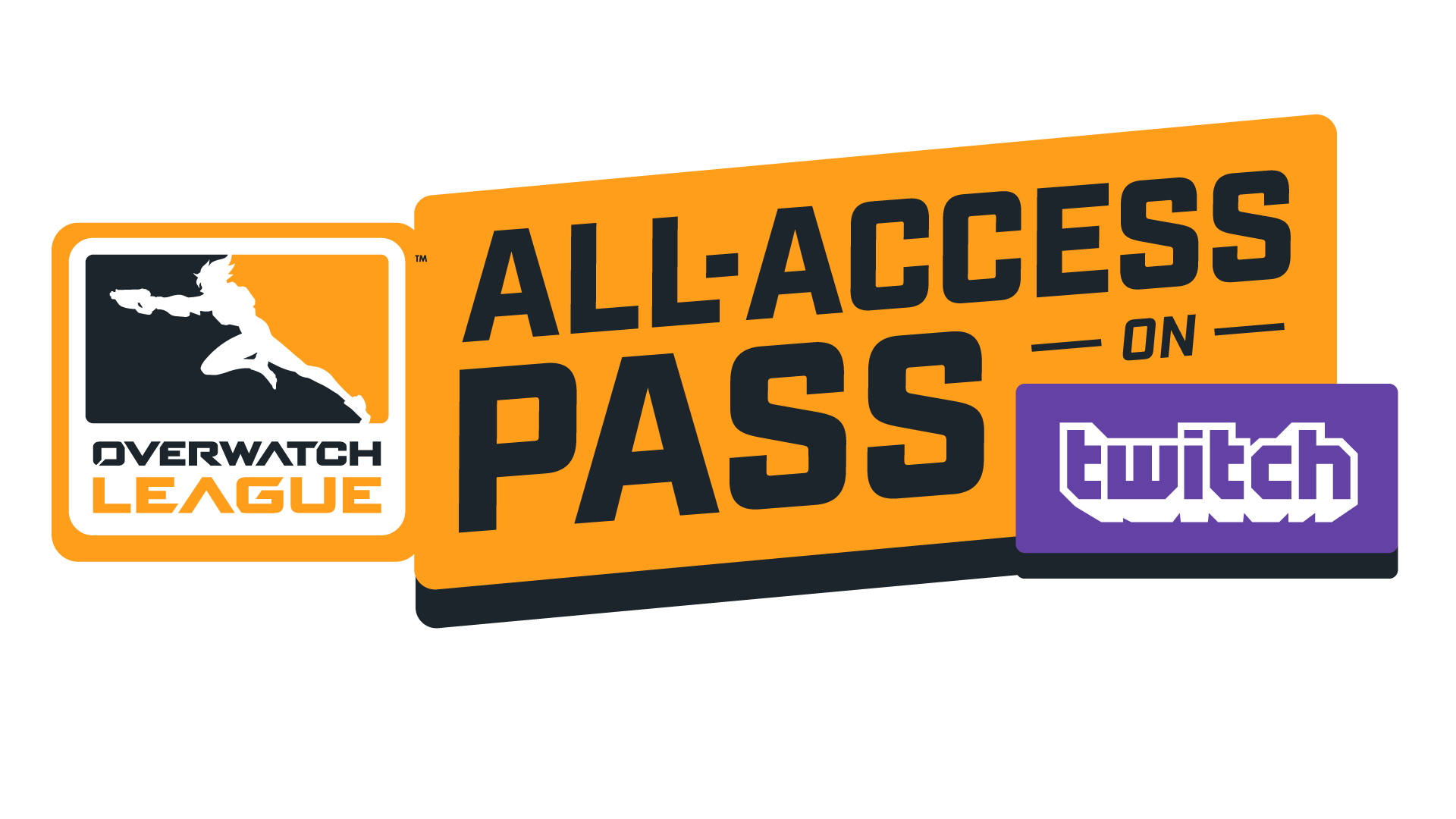By Michael Sagoe (mikedot)
From the ashes of Project Titan, the highly anticipated successor to World of Warcraft, comes a new IP from Blizzard Entertainment that attempts to show a whole lot of us just how much fun working together can be. Overwatch is a team-based shooter where players set on two teams of six will battle it out on various objective-based missions. Players will have their choice between a ton of different heroes to choose from, each with their own unique skills and abilities, along with being able to switch any hero during battles in order to strengthen their team’s composition and weaken their opposing attackers. With battles that take place on fictional battlegrounds based on real world locations, bright and colorful visuals, and a decent amount of hero variety and team comps to experiment with, Overwatch presents itself with a new but familiar approach to team-based shooters.
Getting the most obvious detail out of the way: It does take a handful of nods from team-based shooters that have come before it, most noticeably being Valve Software’s “Team Fortress 2.” It’s hard to deny that a lot of influence for Overwatch’s gameplay structure came from it. Blizzard just threw it through their molecular reconstruction process to create something with a much wider audience appeal, in the same way that Blizzard took influences from Magic: The Gathering in order to create Hearthstone. It’s different enough to consider a unique title, but still familiar enough to be approachable by TF2 fans all around. In this review, I’ll be referencing Team Fortress 2 quite a bit, because it really is an important piece of the puzzle that is Overwatch’s overall fun factor (and potential flaws).
Controls
Overwatch uses a very simple control scheme that should be familiar to anyone that has played a modern FPS game before: WASD for movement, Spacebar to jump, LMB for attacking, RMB for alternate attacks, Shift and E for various skills, V for quick melee strikes and Q for ultimate abilities. Some heroes can also press 1 and 2 to switch between different weapons, but only a few heroes have access to this, which is a bit disappointing as I feel that many heroes in the game could have benefited from secondary weapons in order to make the overall gameplay more appealing (more on that later).
The movement for each hero may be different depending on which one you choose, but they all feel tight and responsive. Some heroes will take more time to get used to, however. From Tracer’s signature blinks, to D.Va’s jet booster or Hanzo & Genji’s wall running and jumping, a handful of heroes can get around the map in their own special way, making them feel very distinct from each other and fun to traverse with.
Shooting controls also feel very quick and responsive as well. While most ranged weapons in the game use hitscan, others’ weapons either make use of projectiles with travel speeds, as well as beam weapons used to channel damage by focusing their crosshair on an opponent. Most of the projectile weapons in the game, however, generally travel so fast that they could almost be considered hitscan weapons in their own way, so everyone will feel like their aim is effective, no matter which hero they choose.
Gameplay and Features
The core gameplay focuses primarily on moderately paced, up front action. With multi-stage objectives to focus on and multiple ways a single team can attack or defend said objectives, the action always feels hot and heavy. While most heroes in the roster make use of ranged combat, every hero has infinite ammo in their reserves, so players won’t have to worry about searching around the map for ammo picks. Some heroes can soak up more hits than others and some heroes can regenerate HP over time, setting their style vastly apart from those that must hump their healer or scavenge for health packs around the map instead of staying in the fight. With these two design choices, I feel that Blizzard managed to find a good balance between strategic and chaotic gameplay, especially with ammo since all players can just focus on getting into the fray. When presented as a full package, it’s a refreshing take on a genre known for getting bogged down in unfun mechanics.
Overwatch features 21 distinct heroes and 12 maps to play on, with more being planned post-launch. Each hero fits into one of four categories: Offense, Defense, Tank and Support. Offense mostly focus on straight up eliminating opponents, defense focuses on stopping opponents dead in their tracks, tanks focus on disrupting enemy lines and soaking up damage, while supports either heal the team or provide various forms of utility such as damage boosting or teleportation.
The heroes in the game are surprisingly well balanced. In fact, I would go as far as to say that Overwatch is probably the most balanced team-based shooter I’ve ever played because every hero in the game has obvious advantages (some more than others) and disadvantages (Again, some more than others) that can easily be figured out just by reading up on their details in the hero select menu. You can also click on the (!) icon or play them at least for a few minutes at a time. With heroes that can double jump, climb up walls, teleport short distances, provide easy cover fire and area denial, shield teammates from devastating attacks, heal, distort or straight up fly in the sky to rain death from above, there’s always some way for players to break through a choke point or hold a line. Basically every hero has that superstar moment so long as their player knows when and where to use their abilities, not to mention the skill to land said abilities.
The game system in place for Overwatch does as much as possible to make every player feel like they’re contributing in some way or form. The point system awards brownie points wheenver a player eliminates an opponent (by kill or assist), earns a kill streak, heals, blocks damage, gives opponents a debuff or simply stands next to an objective. All of this adds up to a meter that sits below your hero’s health bar known as the “On Fire” meter, and if you build enough points, your character’s icon will light on fire and lets other opponents know that you’re not playing like crap. It’s a nice little bit of encouragement for players to work towards during each and every match, even if it does turn players into potentially targets for opponents to pile on.
During the start of a match or in between respawns, the hero select screen will give players tips on how to construct a viable and balanced team, which I feel is an excellent way to make games with random strangers feel more sensible. This is unlike Team Fortress 2, which does very little in the way of telling players how a proper team should be made, thus resulting in new players feeling confused and useless when playing with and against seasoned veterans.
Although there are times when some players seem to ignore the team’s tips in pick-up groups and only play a single hero that they’re comfortable with. Or team’s that all pick similar heroes filling the same role. While experimenting with ridiculous team comps can be fun (because who am I say that a team filled with only giant gorillas with tesla cannons isn’t ridiculous enough to try out at least once), the team tips should be taken into hefty consideration if playing competitively, as switching your hero to fit the situation is one of Overwatch’s biggest features. However, I also feel that this feature does highlight what I feel could be the game’s biggest flaw.
One main reason why Overwatch is so balanced is because the mechanics for each hero are very shallow. The skill ceiling for most heroes’ ranges from low to moderate, and it doesn’t take very long to figure out how to use each hero effectively. Most players will feel like they’ve reached their hero’s full potential with a few hours or so, and then its just a matter of learning every hero’s abilities to balance out when to fight and when to run to push yourself from a good player to a great one. From my time spent playing the open beta into retail release, I could play exceptionally well with certain heroes and use every other hero in the game competently. While much of that competence was due to my experience with other FPS titles, the active and passive abilities among heroes lean towards straight forward and simplistic, and there’s no alternate skills to that players can bring into combat. What you see with your hero of choice is all that you get.
Because of this simplistic gameplay design choice, the core gameplay focuses on hero switching to make up for shallow mechanical depth. There’s a very clear “Rock Paper Lizard Spock” Meta among the roster that players will have very little choice when battling against outside of switching heroes when the situation arises. Unfortunately the right choice isn’t always the fun choice, and players will have to decide between what’s effective and what’s enjoyable. This is simply not a game where you can main a single hero and play well with them all the time. This is why you’ll never see a “Top” Genji or Tracer player, because when you have a defense hero like Mei (for example) who can use her freeze gun to stop speedy characters in their tracks, and assuming that both players are of equal skill level, that Mei player will always beat out that Genji and Tracer player. The only reasonable counter is to switch heroes.
Now, when compared to TF2, not only is there different techniques players can learn with most classes, they also provide three weapon types for each class (Primary, secondary and Melee), as well as many different weapon and equipment side-grades players can unlock that will slightly or completely change the way each character class can be played. Thus a player can experiment with multiple playstyles on a single hero, or team up with others to find unexpected synergies with obscure playstyles. Granted, these weapon and equipment side-grades did not get introduced into TF2 until much later, but when they did, they helped create a more open playing field for each class type, making the game much deeper. With invitational tournaments popping up all over the place and the addition of ranked matches at launch, I think it’s clear that Blizzard is hoping to see Overwatch strike it big as an eSport. But because Overwatch plays it safe by making sure that each hero can only be played a certain way to ensure gameplay balance, it potentially loses out on one aspect of competitive games that makes them fun to watch.
On a more personal note: Another aspect that I feel Overwatch is missing out on when it comes to enjoyable competition is player individuality. Yes, this may be a strange point to make when it comes to a hero shooter, but the freedom to take advantage of gameplay depth to define your own playstyle, rather than adhering to a playstyle set by the game’s basic mechanics, is what makes competitive games exciting to play or watch as a spectator. All of this isn’t to say that Overwatch fails completely as a competitive game, but it’s rather disappointing from an individual standpoint that players won’t truly stand out once everyone has reached a visible skill cap. At that point the only difference between top tier players will be their aim.
To further illustrate: Just look towards any spectator sport and the most popular teams in their respective leagues. How much enjoyment would there be in watching if every basketball player could play as good as Michael Jordan, or if every NFL player played as well as Tom Brady? Sure, there’s no I in team, but there’s an M and E. Player individuality is something that has always been praised in team-based games, and this is something Overwatch could end up missing out on as a competitive game due to its gameplay design.
Funny enough… with all these mentions of player individuality, I have yet to mention the one feature in Overwatch that attempts to showcase this at the end of each match. Simply known as the “Play of the Game” (PotG), this feature shows all players a 15 second highlight reel of a single player from either team that managed to perform a game changing move that helped turn the tide of a match. As it currently stands, this feature seems a bit flawed to me because it generally favors who gets a game changing set of kill streaks too much. Getting kills are important and all, but you’ll rarely see a Mercy player earn PotG for reviving teammates, or Zenyatta player earn PotG for his transcendence heal. And what about other important aspects that secured a winning match, like that one player who glued themselves to the objective and never abandoned it for a single moment, or that player who stopped an enemy team’s push all by themselves? Well those moments happen a lot in Overwatch, but again with how the PotG feature works, you’ll rarely see these moments being highlighted. Only “1337 kills, bruh.”
Even more so: most kill-based PotGs happen because a player managed to get their ultimate ability off. When I realized that most PotGs can be earned simply by pressing the Q key at the right time, they started to seem less impressive overtime. Overall, Play of the Game is a nice, but flawed feature that needs improvements, especially since support type heroes or players focused solely on the objective rarely get any love from it, despite being the backbone of any good team.
One feature that DOES make a lot more sense in highlighting individual players is the results screen, as it showcases up to four players that managed to rack up points in various different categories during a match, such as absorbing damage, assisting with recon, healing teammates, defending objectives, having good weapon accuracy and everything in between. Each player can also commend the four showcased players as a sign of good will, admiration and respect. If a single player earns up to five commendations, announcer will declare them as an epic player. While I’m not sure if players get anything special for earning commendations, it’s a good feeling to earn that little announcement, knowing that players have acknowledged your valiant efforts.
Personally: I would rather ditch the PotG system and focus on highlighting the result screen a lot more, showcasing more than four players during a match and their impressive efforts instead. Although I will admit: PotGs are fun to watch every now and then. (Not to mention they do make for some quality gfycat bait. *Laughs*)
Continue on to Customization, Visuals, and Gameplay Critques

